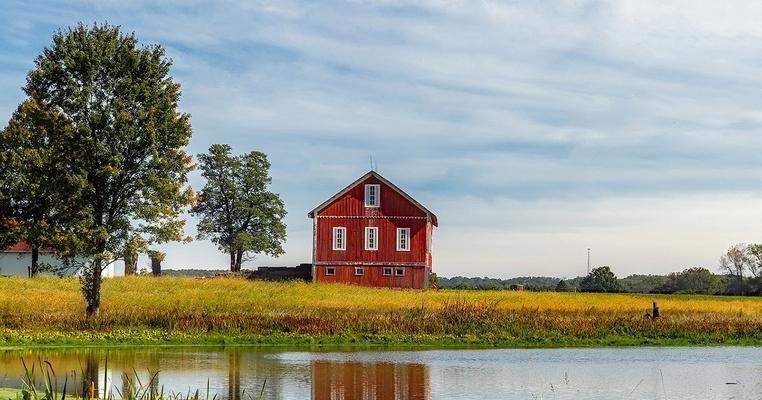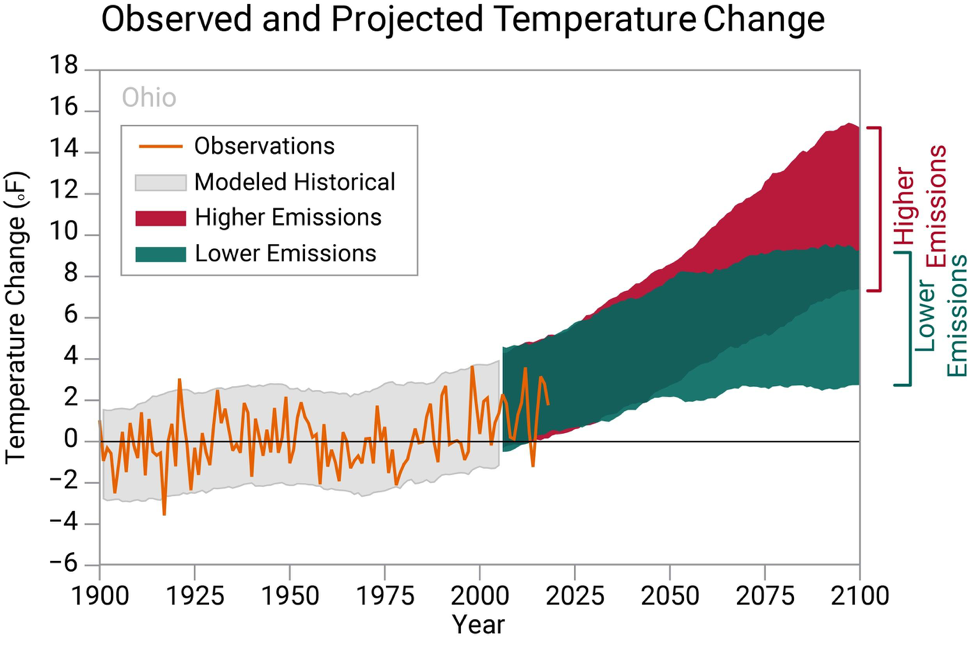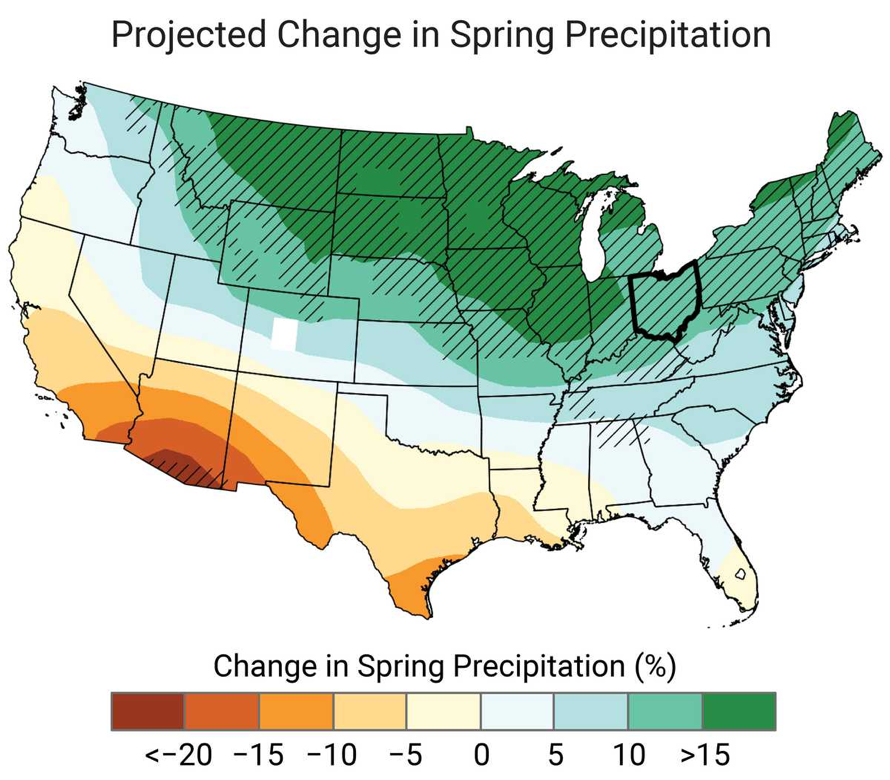
How Is the Climate Crisis Affecting Ohio?
Ohio is the birthplace of eight US presidents, the National Football League, and Superman (well, he was created in Cleveland — everyone knows he was actually born on Krypton). It’s also home to more than 11 million people, and they’re seeing the impacts of the climate crisis today.
Fortunately, cities across the state are making bold plans to cut emissions and solve this crisis. Cleveland and Cincinnati have both pledged to go 100 percent renewable, by 2050 and 2035, respectively. That’s great news, because the impacts of fossil fuel emissions are already clear in the Buckeye State. From higher temperatures to (both!) extreme droughts and flooding, here’s the breakdown on how climate change is impacting Ohio.
Rising Temperatures
Here’s the climate reality: Since the beginning of the twentieth century, Ohio has warmed by about 1.5 degrees Fahrenheit. Without action to curb fossil fuel emissions, the state could see “historically unprecedented warming” through the rest of this century, according to NOAA.
Burning fossil fuels is the number one cause of climate change. That’s because when we burn dirty energy like coal, oil, and natural gas, we release heat-trapping gases like carbon dioxide and methane into our atmosphere. As more and more of these greenhouse gases (GHGs) are pumped into the sky, temperatures around the globe rise and we see our once-stable climate start to change.
>> Download the free fact sheet on fossil fuels <<
And while this is a worldwide phenomenon (it’s called global warming for a reason, after all), the effects hit all of us locally in different ways. In the Buckeye State, average temperatures are up by 1.5 degrees Fahrenheit since 1900. You might think it doesn’t seem like much, but just a degree or two can make a huge difference in our lives. Between December 2018 and February of 2019, Ohioans experienced a winter that was a full 6 degrees Fahrenheit warmer than the average.

Rising temperatures are already affecting lives and livelihoods in Ohio. In October 2019, the largest school district in the state cancelled classes due to a heat wave that hit the Midwest. The school district cited heat, humidity, and a lack of air conditioning. That’s because when it is extra humid, it can feel much warmer to the human body than the temperature alone might suggest. This can lead to heat exhaustion or even heat stroke.
Without action to curb climate change, analysis from Climate Central shows that “by 2050, the state is projected to see 30 dangerous heat days a year.” That’s up from only about five dangerous heat days per year now.
If that’s not enough, climbing temperatures don’t just impact our health. They impact our economy. Warmer days can mean more intense dry spells and that spells bad news for Ohio’s bustling agricultural industry — where corn and soybean crops alone were worth more than $2 billion in 2019.
More Intense Droughts
Here’s the climate reality: Scientists expect that Ohioans will experience more extreme drought in the future — which is bad news for the state’s farmers (and all of us who eat).
Drought is already a reality in Ohio. But climate change is expected to exacerbate naturally occurring droughts, making them much more intense.

Palmer-Z drought index of the United States (August 2012, courtesy of NOAA). Ohio is circled.
For a glimpse of what the future could look like, we can look back at 2012. That year, Ohioans experienced both soaring temperatures and intense drought, and the state saw big hits to its agricultural industry — much like both nearby Michigan and Wisconsin. By August of that year, NOAA had classified much of the state to be in moderate to extreme drought.
According to the Central US 2012 Drought Assessment (PDF), Ohio saw big hits to its yields for corn, soybeans, alfalfa, peaches, and apples. In fact, the apple crop was hit especially hard thanks to early frost, record heat, and drought — putting it down 41 percent from 2011.
In a deeply troubling 2020 report, “Seeds of Despair,” the authors detail the heartbreaking reality of increasing stress on farmers in Ohio and across the nation. In the span of just two years, three farmers in the small town of Georgetown took their lives. This is part of a disturbing trend: between 2014 and 2018, 450 farmers died by suicide in the Midwest alone.
Devastating. More than 450 farmers killed themselves across nine Midwestern states from 2014 to 2018, according to data collected by the USA TODAY Network and the Midwest Center for Investigative Reporting. https://t.co/c5NsmftoNr
— Liz Crampton (@liz_crampton) March 5, 2020
The authors lay bare the maelstrom of pressure facing farmers like those in Georgetown and across the Midwest:
“[Farmers] now are saddled with near-record debt, declaring bankruptcy at rising rates and selling off their farms amid an uncertain future clouded by climate change and whipsawed by tariffs and bailouts.
For some, the burden is too much to bear.
Farmers are among the most likely to die by suicide, compared to other occupations, … The problem has plagued agricultural communities across the nation, but perhaps nowhere more so than the Midwest, where extreme weather and falling prices have bludgeoned dairy and crop producers in recent years.”
Reports like “Seeds of Despair” show the devastating human toll of the climate crisis. It’s clear: We have no time to waste to take bold climate action.
Heavy Rain and Flooding
Here’s the climate reality: When it rains, it pours. Thanks to a changing climate, Ohio is seeing more and more heavy rain fall on the state, which is expected to cause more floods in the spring.
It might seem strange, but climate change can mean both more intense droughts and more precipitation and flooding. When droughts do come around in the Buckeye State, those droughts are expected to pack a stronger punch. But overall, Ohio (much like the rest of the Midwest) is expected to get warmer and wetter with climate change.

“Projected change in spring precipitation (%) for the middle of the 21st century compared to the late 20th century under a higher emissions pathway.” (Source: NOAA)
That’s because the climate crisis supercharges our water cycle. It’s pretty straightforward: Higher temperatures mean more evaporation. Warmer air can hold more water vapor — meaning more intense rainstorms. And when rain falls hard and fast, it often runs off the surface rather than absorbing into the soil, and that can mean serious flooding.
The state is already seeing this today. According to NOAA scientists, there has been a significant increase in the number of heavy rainfall events in Ohio since the mid-1990s. Just take a look at the news: as the New York Times reported on March 20, 2020, “Heavy rains swamped communities in central and southern Ohio, leading to road closures and rescues of residents by boats and at least one military vehicle.” The story was much the same in 2019 with historic flooding across the Midwest, including in the Buckeye State.
>> The Climate Crisis and Flooding: What You Need to Know <<
Like drought, flooding poses “a threat to Ohio’s agricultural industry by delaying planting and resulting in loss of yield.” Floods can also wreak havoc on our homes and businesses, and have serious implications for our health. Not only are floods dangerous and sometimes deadly; they can expose us to water-borne illnesses like “wound infections, dermatitis, conjunctivitis, and ear, nose and throat infections, as well as releasing toxic chemicals into our drinking supply.
Here’s How You Can Take Action
The impacts of climate change on Ohio are clear. But it’s important to remember that we have real solutions to solve this crisis today.
We believe that together, we can create a world where we rapidly transition away from fossil fuels to end the climate crisis, safeguard our health, strengthen our communities’ well-being, and ensure justice for those who have been marginalized in the past.
That’s why we’re excited to announce that this July, we will host our first-ever virtual climate advocacy training.
During this moment of physical distancing, we’re excited to join together and raise our voices for change. Because even with the threat of coronavirus outside our doors, we are still working to give our children a better world to live in.
This intensive (and free!) online event will bring together people from around the globe who are ready to make a difference.
Are you one of them?
Request to join the first-ever Climate Reality Leadership Corps Global Training today!

